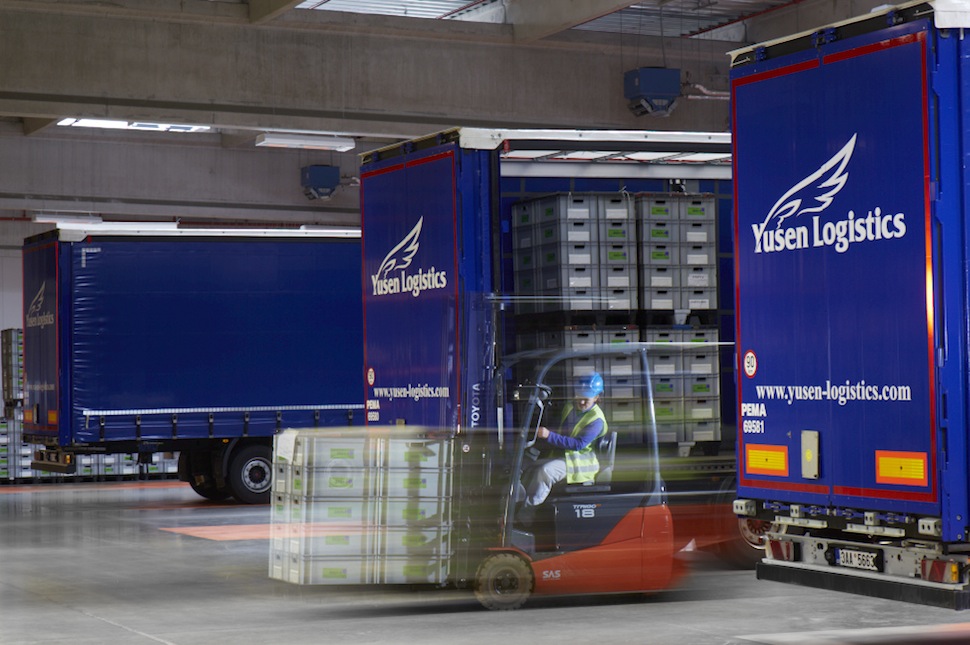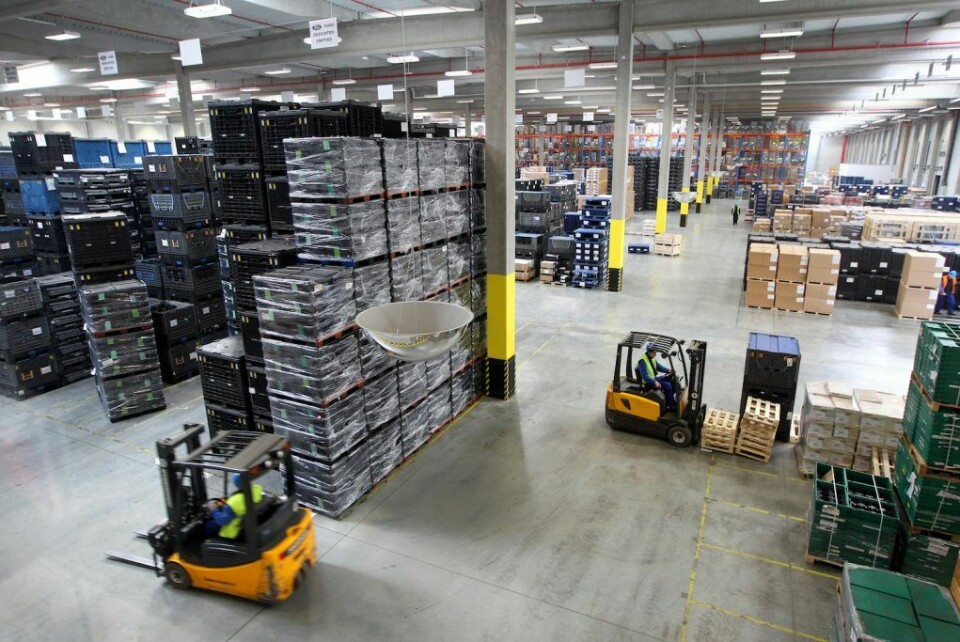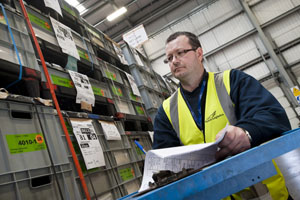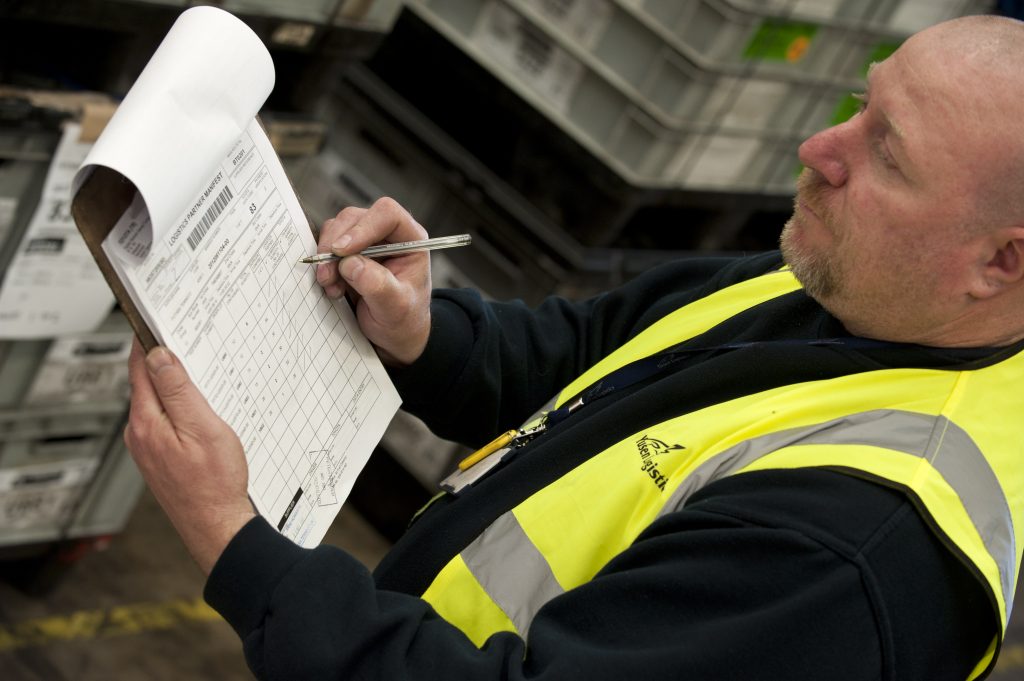Yusen Logistics: Always automotive
 Yusen Logistics’ European and Czech operations are a benchmark for its growth and development
Yusen Logistics’ European and Czech operations are a benchmark for its growth and development
Hidden away and surrounded by pristine countryside in Bohemia is one of Yusen Logistics’ five locations in the Czech Republic. Although you might drive past without noticing it – or be distracted by the steady flow of trucks moving in and out of it – Yusen’s automotive operations in this corner of central Europe are influencing the company’s practices throughout the world.
Yusen Logistics, formed in 2011 from the consolidation of the NYK Logistics division, and NYK Group’s air freight and freight forwarding business, Yusen Air and Sea Services, has long had a focus on automotive, and it was the first industry Yusen managed as a separate vertical.
“The first relationship we had goes back to the Toyota relationship, and the Toyota production system is the basis for many management systems today,” says Ian Veitch, chief regional officer at Yusen Logistics Europe. “It gave us good grounding a decade ago. That was at a time when most manufacturers were moving from a push system to a pull system and cutting down their inventory.”
In this story...
Yusen’s Kolin operation is just a stone’s throw from the TPCA plant (a joint venture between Toyota and PSA, see p45), the logistics provider’s customer in the Czech Republic since 2004. Over that time Yusen Logistics has managed to cut logistics costs considerably, with ongoing efficiencies through its own and TPCA’s kaizen philosophy, according to Michal Peter, managing director of Yusen Logistics (Czech). For TPCA’s production, Yusen collects parts mostly from suppliers in the region by dedicated daily routes, managing the shunting operation inside the TPCA plant and moving hundreds of pallets daily through a crossdock towards the assembly line.
Yusen’s supplier distribution centres in Europe typically manage parts for both automotive and retail, where the company provides a range of handling, packaging and inspection services. However, Veitch explains that the disciplines required for automotive need to be stringent, as the inventory levels are so low, and the implications of getting anything wrong so expensive. Automotive is therefore a lead driver for other activities at Yusen. “You can keep lifting the kaizen culture and apply it to other verticals. The techniques for good logistics don’t change, but the drivers of the logistics mentality do,” he adds.
Yusen’s revenue in Europe between 2014-2015 stood at €860m ($970m), with around €300m coming from its automotive business. In Europe, the proportion of automotive revenue of total turnover varies considerably by country, accounting for up to 75% of its business in the Czech Republic, and 30-35% in Germany and the UK. Veitch says, “We invest substantial sums in automotive. Where we’ve gone for the new openings, specifically we’ve said we’ll try to develop automotive.”
Veitch adds that Yusen has recently made investments that it expects to boost its automotive business, including a share acquisition in Turkey, adding staff in Slovakia, and setting up an office in Vienna as a gateway for air freight.
Over the past year, Yusen’s automotive business in Europe has grown by 12-13%, which Veitch expects to moderate but remain around 8-9% per year over the next five years. However, while growth has been brisk in automotive, Yusen faces tough conditions, including annual price reductions, says head of Yusen’s automotive vertical, John Mitchell.
“Many of our big automotive revenues are in a tender lifecycle phase. With the constant pressure of rate reductions every year, you can only go so far. As well as having to grow by 10%, you’re having to cut costs by 5%, so really we’re aiming at 15% growth every year,” Mitchell says.
Though Yusen is growing, the sluggish European economy has hurt margins. “Although we grew last year, despite being in recovery mode, our profit targets have been affected,” Veitch says. “The recession affected profitability, but a lot of that is where we have asset-rich operations, and we haven’t seen any revenue shrinkage over the past couple of years.”
"You can keep lifting the kaizen culture and apply it to other verticals. The techniques for good logistics don’t change, but the drivers of the logistics mentality do" – Ian Veitch, Yusen Logistics Europe
The economic situation in Russia is obviously more extreme. Many of Yusen’s customers have invested heavily in the market, and the provider followed them. However, Veitch believes it is important to stay the course, and he’s confident the market will come back. “It’s affected our short-term plans and has been difficult, but you have to look further ahead. The rouble is rebounding, and oil prices have gone up slightly. Russia is a market of 130m people, and things will recover. We have the luxury of having a Japanese company as our parent, and they do take a longer view of the market.”
Despite the slowdown, Yusen has invested further in Russia. It opened a branch office late last year in Togliatti, home of Russia’s largest automotive producer Avtovaz – now controlled by the Renault Nissan Allaince – and is targeting more local manufacturing, as opposed to parts imports, particularly as OEMs move towards local sourcing. That means that Yusen needs to be close to the supply base, says Mitchell.
Working across modes
Road is still the dominant mode for Yusen in Europe, however it is interested in increasing intermodal logistics. Ian Veitch points to difficulties such as switching crews across countries, as well as different rail gauges across the continent.
The company has conducted some trials using the Trans-Siberian railway between Europe and Asia. While rail is more expensive than sea shipping, it is considerably cheaper than air freight. “If you’re going from South Korea to St Petersburg, the transit time would be five or six weeks by sea. Air freight would be 12 hours but very expensive, and rail takes two weeks. That will work in some environments. It’s two or three times the cost of sea, but it’s the difference between six weeks and two,” Mitchell says.
Modal switch would usually be driven by circumstance. At Felixstowe port in the UK, for example, the cranes used to offload ships can’t operate in winds over 30-40mph (50-65kph). Sometimes Yusen has had to offload at a separate port, and then switch the mode of transport. “You have to be flexible in logistics. You have situations that are difficult to plan. If you’re reliant on rail, and there’s a German rail strike, you have to find another alternative. If pilots go on strike, you have to be able to manage that,” Veitch says.

While some would argue that air freight should only be used as an emergency measure, Veitch explains that Yusen’s air freight business has actually increased by 6-7% every year. “People will invest in air freight to get a product to the market as soon as possible. One customer uses air freight as their principal mode of transport.” Others, he says, use it more during launches and emergencies, while in other cases global sourcing necessitates air freight.
“There will be certain models of cars where the stock is only held in one location and air is the mode of transport. It’s not an option to use anything else,” Mitchell says.
Europe can act as a centre of expertise for expansion in global areas for Yusen, with its business continuing to spread with the global supply chain, including to India, China and Mexico. In the automotive industry, Veitch points out, carmakers are particularly concerned with replicating quality and standards across regions. “A global OEM will want a standardised supply chain – they will want their working model and the same quality whether they’re in India, or China, or western Europe. The challenge will be how that is achieved, and teaching staff to use the systems,” he says.
In Mexico, for example, where the company has been developing its automotive business, training has been exchanged with the Czech Republic and the UK. “A lot of our customers are now opening in Mexico, and we’ve been working on a lot of cross training. We’ve had a Mexican colleague working in this region and the UK, to learn our best practices in Europe, and to take them back and implement them,” Mitchell says.
He explains that such development is enhanced not only between regions, but also in sharing information with customers. Going into a new market like Mexico with a new logistics partner would be a big risk for any company, so OEMs are keen to take their established providers with them. With the likes of Toyota and other Asian and European carmakers expanding currently in Mexico, it provides opportunities for global providers. “It’s a partnership-style model. That’s how we’ll develop more quickly, and in the most organised way in Mexico,” Mitchell adds.
 Along with Mexico, the company sees room growth in other corners of the world. “India has huge potential but the infrastructure is terrible. Looking at port congestion, it can take a couple of weeks to get a ship offloaded,” Veitch says.
Along with Mexico, the company sees room growth in other corners of the world. “India has huge potential but the infrastructure is terrible. Looking at port congestion, it can take a couple of weeks to get a ship offloaded,” Veitch says.
Mitchell explains that, if a country like India is to thrive, its logistics will need to reach global standards, as customers will be less tolerant of an infrastructure that doesn’t give them exactly what they want. He predicts the logistics market in the country will change, including the emergence of new players, which will likely take staff from more developed players.
China, South-East Asia and, perhaps surprisingly, Australia and New Zealand are all areas of growth for Yusen. “China is kick-starting everything and the other economies are benefitting from that,” Veitch says.
Technology, innovation and the future
While some warehouses now feature scores of automated guided vehicles (AGVs) zipping around, and even drones flying from rack to rack, such technology is less common in automotive parts centres. Veitch explains that Yusen uses some elements of automation, including the use of a warehouse management system, but he doesn’t see where AGVs could really come into play. “The cost-effectiveness is the price versus the saving. Our industry also has to be flexible, and AGVs are only really good between fixed points.”
Yusen’s facilities at Kolin and Strancice in the Czech Republic are good examples of warehouses with relatively low levels of automation, but effective planning and communication technology. RFID is used in the racking part of the warehouses dedicated for retailers only, but the majority is still pen and paper with some 2D barcode scanning.
"Getting the money back on technology is often around 15 years. So from a logistics provider point of view, balancing those two things is a challenge commercially" – John Mitchell, Yusen Logistics Europe
Mitchell explains that it is important to strike a balance between employees using technology to complement their work, and using it to do all their work. Veitch adds that RFID technology is useful for the automotive supply chain, but the price point needs to be right. “RFID used to be very expensive, but the price probably halves every two years, and now it’s one of those technologies that you can imagine being used so much more,” he says. RFID is also important for asset management on factory floors. “We need to have visibility of tier ones and twos, and RFID will help,” Mitchell adds.
Mitchell explains that at Yusen’s aftermarket operation in Amsterdam, the company uses technology such as pick-by-light and scanners. “Getting the money back on technology is often around 15 years. So from a logistics provider point of view, balancing those two things is a challenge commercially. Automation can be more of a hindrance than a help. I’ve seen big automation projects go badly wrong,” he says.
In-cab technology used by Yusen includes a built-in scanner with live GPS and an in-built camera, but the effectiveness of such technology also depends on the quality of infrastructure. “Western Europe is mostly on 4G, but eastern Europe is not up to the same level. There needs to be a tech investment to allow that technology to migrate so there are fast data streams,” Veitch says.
Yusen has put into use truck concepts that increase capacity, such as Euro Combis on regular routes for TPCA and other OEMs in the Czech Republic and Slovakia; it is also using speed curtain trailers, which save drivers’ time; and a shunt system for trailers within the TPCA yard.

Alternative fuel equipment is also starting to play a bigger role in Yusen’s operations. In the yard, it is considering using electricity to power its shunt trucks. For runs between Slovakia and Hungary, it is already using CNG trucks, which work particularly well as the terrain is mostly flat, and the drivers know exactly where the refuelling station is, says Peter.
Currently, Yusen is operating IT systems specific to each country, but is working on a more unified system for transport and warehouse management to match its global systems for freight forwarding. “It’s critical, really. Trucks are mobile and they cross borders, so we need to have visibility and one system across Europe. We operate about 90 different applications. Some are customer-specific, but bringing that number down will make it easier to manage. If a customer has three or four warehouses, they will want visibility across all of them,” Veitch says.
Market maturity does have an impact on the ability to run a Pan-European system, however. While there are considerable efforts to make Europe one market, differences between countries make this difficult. “There are different levels of maturity across Europe. Perhaps there isn’t a branch office in a particular company. Supply and demand across Europe aren’t quite joined up yet,” Veitch adds.
Technology might go some ways towards improving that in future, particularly mobile applications that Mitchell predicts will enhance real-time accuracy across even the longest supply chains. In the meantime, Yusen is trying to join up the dots as much through its global training and continuous improvement focus as through its highly planned parts handling operations. Its European operations play an important role in both.
Click here to read an interview with Michal Peter, managing director, Yusen Logistics (Czech), and Radek Vosta, general manager, production control at TPCA, discussing how the companies work together





